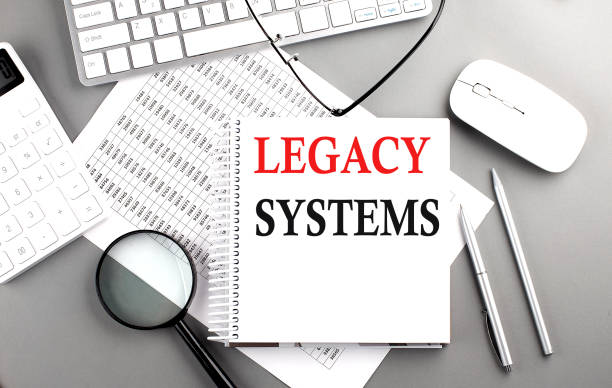
#SmartIndustry
21 January 2025
Integrating IoT Sensors into a legacy system : a technical guide to avoid costly mistakes
The adoption of IoT sensors in industry is a powerful lever for improving performance, predictive maintenance and resource optimization. However, when it comes to integrating these technologies into a legacy system (an existing system that is often old, inflexible and not very interoperable), the challenges are numerous.
Without a well-thought-out approach, the risk is to generate excessive costs, security flaws or incompatibilities that will slow down or even compromise the project. This technical guide provides you with the best practices and mistakes to avoid when integrating IoT sensors into legacy systems.
Understand the challenges of integrating IoT into a legacy system
Why are legacy systems a problem with the IoT ?
Existing industrial infrastructures were often designed long before the digital and IoT era. They can present a number of obstacles:
- Proprietary protocol difficult to interface with modern standards.
- Equipment not designed for connection to IP networks.
- Centralized systems with rigid architecture.
- Weak or non-existent security, making the addition of IoT risky.
- Lack of interoperability with recent software (ERP, MES, SCADA).
The risks of poorly planned integration
A poorly prepared integration project can lead to :
- Costly deployment due to hardware and software adaptations.
- Unplanned downtime that impacts production.
- Overloading existing networks, reducing overall performance.
- Security loopholes that can be exploited by cyber-attackers.
- A lack of scalability preventing the future addition of new sensors.
Key steps to successful integration
Assess existing infrastructure
First and foremost, it's crucial to audit your legacy system in order to identify :
- Communication protocols used (Modbus, OPC-UA, Profibus, etc.).
- Available interfaces (serial ports, TCP/IP, PLC, etc.).
- The data processing capacity of the existing system.
- Cybersecurity needs linked to open data flows.
Choosing the right IoT gateway
Adding an IoT gateway provides the link between IoT sensors and the legacy system. It should be chosen according to several criteria:
- Protocol compatibility: does it support Modbus, OPC-UA, MQTT, etc.?
- Processing power: can it handle edge computing?
- Security: does it offer data encryption and protection against cyber attacks?
Prioritize Edge Computing to reduce latency
Rather than sending all the data to a remote cloud, it's often preferable to analyze some of the data locally, thanks to edge computing. This enables :
- Better responsiveness with real-time processing.
- Reduce bandwidth by filtering out unnecessary data.
- Enhanced security by minimizing exposure to attacks.
Securing the entire network
Opening up a legacy system to IoT sensors can expose the infrastructure to new threats. To guarantee security :
- Isolate IoT flows with VLANs or segmented network architectures.
- Use encryption for all data transmissions.
- Set up connection and access monitoring.
Adopt a progressive, iterative approach
Integration must be carried out in stages to avoid sudden system interruptions:
- Deploy an initial PoC (Proof of Concept) on a pilot production line.
- Test interoperability with existing infrastructure.
- Evaluate performance and adjust according to feedback.
- Gradually roll out to the entire plant or industrial site.

Concrete examples of successful integration
Case study of an automotive manufacturer: improving predictive maintenance
An automotive manufacturer wanted to connect its CNC machine tools to an IoT solution to detect mechanical anomalies ahead of breakdowns. Its SCADA system, which had been in use for over 20 years, was not natively capable of collecting this data.
Solution implemented :
- Installation of vibration sensors connected to machines.
- Use of an IoT gateway to convert data to Modbus TCP.
- Data analysis via an embedded Machine Learning tool.
- Early detection of faults, reducing unscheduled downtime by 30%.
Logistics warehouse: energy optimization
A logistics company wanted to optimize its energy consumption by equipping its facilities with IoT sensors measuring lighting and heating usage.
Solution implemented :
- Installation of presence and temperature sensors in storage areas.
- IoT gateway converts data to BACnet protocol for integration with existing system.
- Automated energy management, 20% reduction in electricity costs.
Conclusion : IoT as a strategic lever for modernizing legacy systems
Integrating IoT sensors into a legacy system is a technical challenge, but also a strategic opportunity to improve operational efficiency and decision-making.
By adopting an approach that is progressive, secure and adapted to existing constraints, companies can reduce costs, optimize operations and accelerate their digital transformation.
Planning to integrate IoT into your existing infrastructure? Implement a well-thought-out strategy and avoid costly mistakes right from the start.









